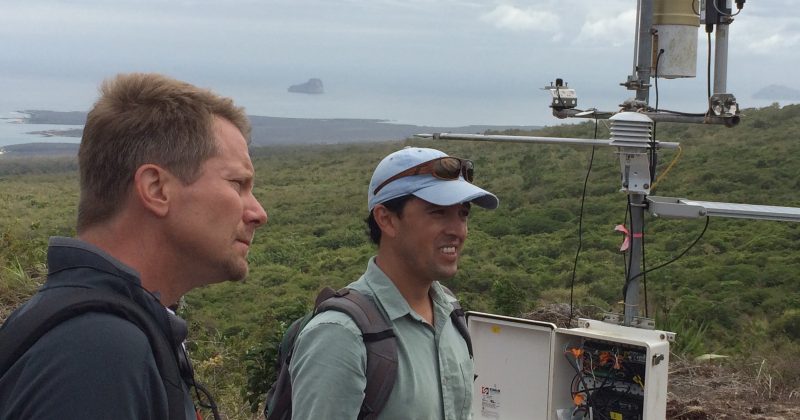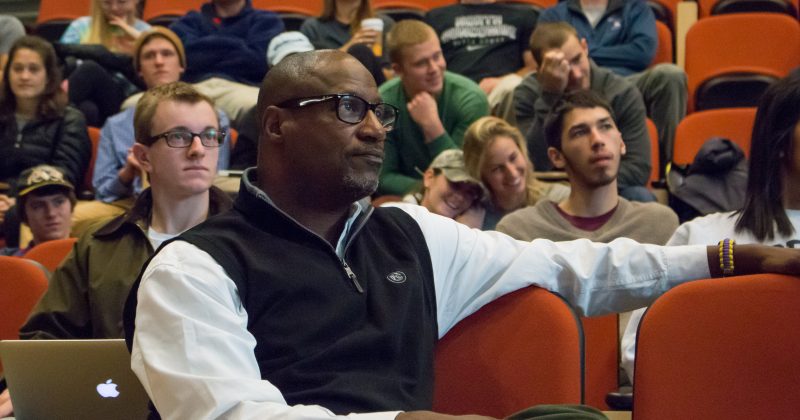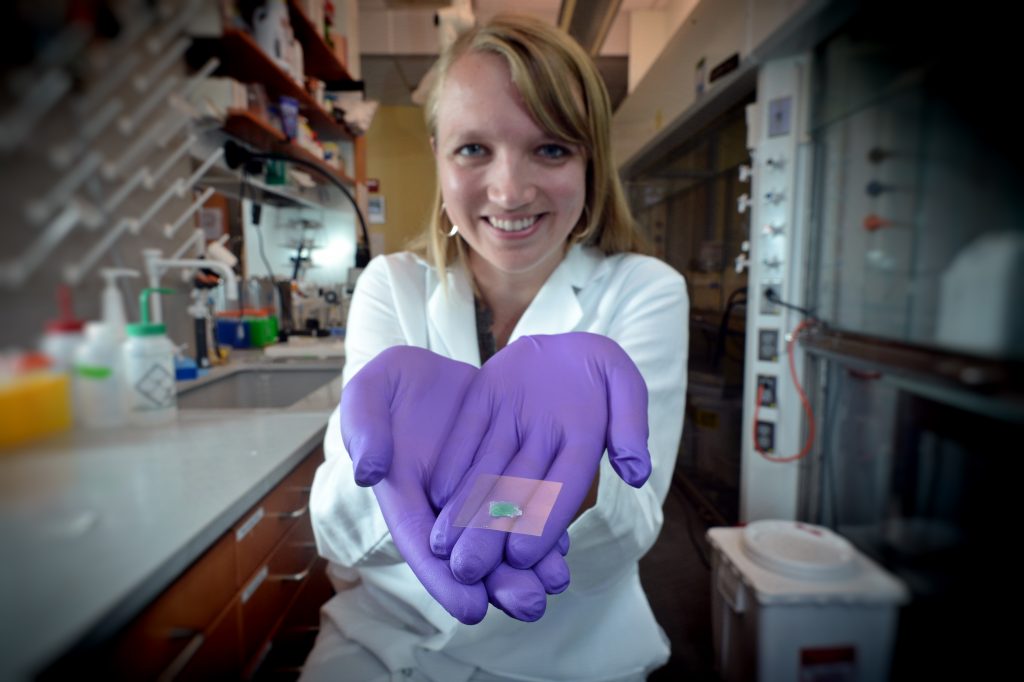
When Katie Moga was a doctoral student in chemistry at UNC in 2015 in the lab of Joe DeSimone, she helped design adhesive patches embedded with microneedles to deliver medication painlessly. The technology has the potential for application in everything from vaccines to chemotherapy, and is an example of the kind of multidisciplinary research the new Institute for Convergent Science will support. (photo courtesy of UNC-Chapel Hill)
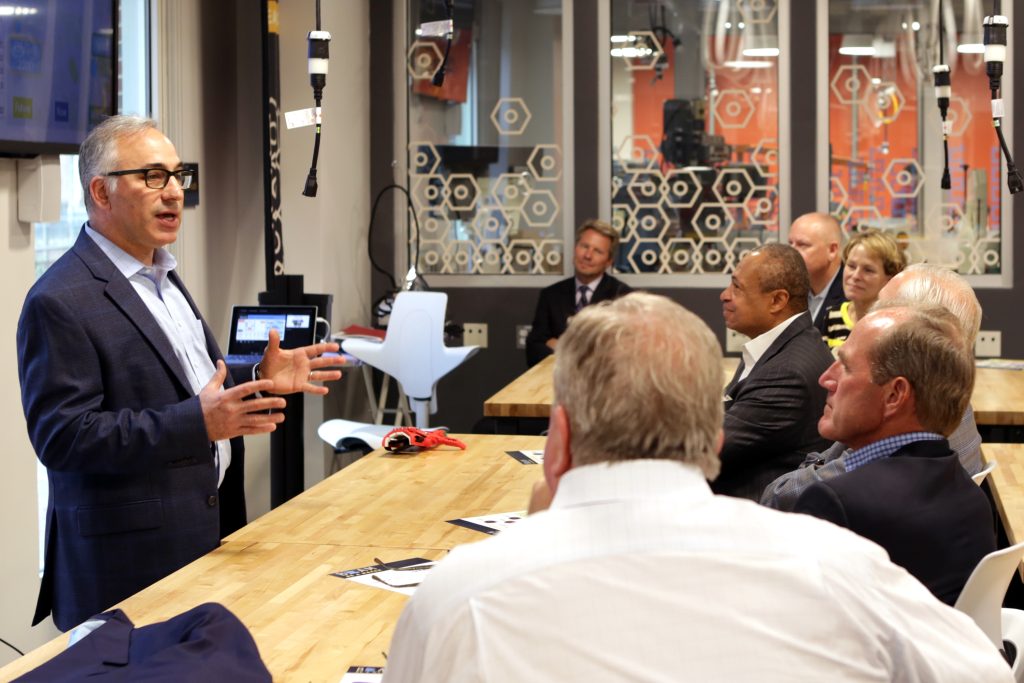
Rich Superfine, chair of the department of applied physical sciences, explains this next-generation approach to science and the new institute that will be home to it at UNC.
Q: What exactly is convergent science?
A: Convergent science is at its core an expansion of the concept of “team science,” where the basic scientist pursuing new discoveries is engaged from day one with the engineer, medical doctor and entrepreneur to seamlessly transition discoveries to impact in the lives of people who most need the innovation. Scientists have performed science for decades in individual laboratories within isolated departments. We have found that integrating discovery science with partners far down the chain of application is essential to speeding the transition of discovery to impact.
Q: What are examples of the innovations that can be spurred by combining insights from different disciplines?
A: Examples include the use of serious gaming technologies to design new materials to deliver drugs to patients or materials to use solar energy to create clean water and electricity. In each case, we need to answer basic science questions to create breakthroughs to deliver new effective therapies, to lower costs and enhance efficiencies. However, the number of science directions to pursue is vast. By having the engineer and clinician as part of the team, the science to be discovered is steered to where it can be most effective. For example, in the case of solar energy, a decision can be made early in the experiments to focus on the fundamental physics and chemistry of materials that are economically synthesized.
Q: What research is happening now at UNC that we could call convergent science?
A: One example is from the laboratories of Joe DeSimone, where he has created teams to speed the impact of new particle printing methods for pharmaceuticals and new 3-D printing technologies. Another is physics professors Jianping Lu and Otto Zhou, who have taken the basic science of carbon nanotubes and transitioned them into a new X-ray technology that is revolutionizing medical imaging. At the outset, Lu and Zhou worked with UNC biomedical engineering professors and UNC clinical medical imaging professors to understand how they should develop the nanotube devices.
Q: Tell us about the UNC Institute for Convergent Science.
A: An important addition to the Carolina Physical Science Complex, this new institute will empower convergent science across the University, providing collaborative and entrepreneurial research space, meeting space, offices for visiting entrepreneurs and scientists from partnering companies. It will be a resource for researchers who want to engage companies in their work or to start their own enterprises. The ICS will strengthen the preparedness of the talent pipeline by engaging existing and new undergraduate, graduate and postdoctoral training programs so that the next generation of students incorporates convergence as a mentality to approach their own work.
Q: How does convergent science fit into UNC’s broader research and innovation ambitions?
A: UNC is a research powerhouse that ranks 8th in federal funding nationally. We deserve to be proud of that activity, while also recognizing the positive feedback to scientific discovery when we step up to the challenge of engaging how our research translates directly to a societal impact.
Q: Why is the institute an important addition to the Carolina Physical Science Complex?
A: The creation of the institute, a signature initiative in the University’s just-launched fundraising campaign, is a phenomenal, transformational opportunity for UNC. We will co-locate individual science laboratories with spaces for team science and collaboration, and will build a state-of-the-art technology hub that will be a beacon to students and faculty. BeAM — the UNC network of makerspaces — has started this revolution on campus by injecting the excitement of the making of things through digital technologies like 3-D printing, electronics, wood- and metal working into the lives of students and faculty across the arts and sciences. The building itself will serve as a metaphor for this dynamic, creative and collaborative approach to the arts, science and discovery.
Q: How can we encourage students to work on creative solutions that stretch across disciplinary boundaries?
A: Our undergraduates are encouraged and empowered from the moment they step foot on campus to work on real problems of consequence. Many are drawn to UNC because of its deep commitment to public service and to creating innovations that address grand challenges. And many already have the skills to take off upon arrival, but many more need to be trained in collaborative interdisciplinary approaches. Successful projects demand multiple viewpoints and talents, where everyone shares a deep respect for all disciplines.
Read about an example of convergent science — the nanocomposites research by UNC professors Theo Dingemans, Greg Forest, Daphne Klotsa and Peter Mucha.
Read about how the Institute for Convergent Science is one of the signature initiatives in the Campaign for Carolina, UNC’s newly announced $4.25 billion fundraising campaign.
Interview by Kim Weaver Spurr ’88
Published in the Fall 2017 issue | Features
Read More
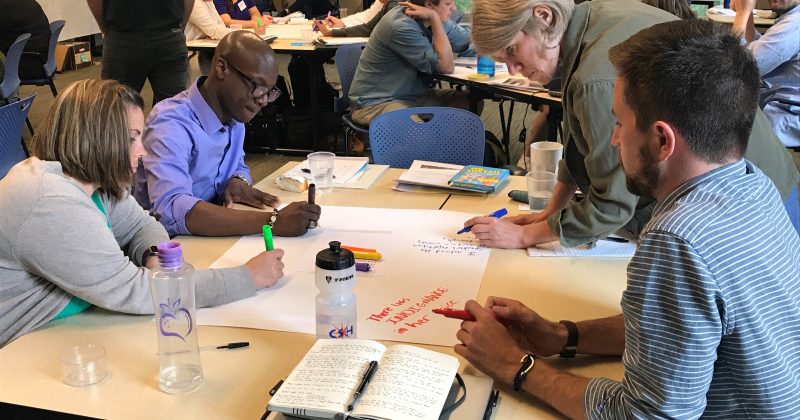
With Mellon grant, launches ‘Humanities for the Public Good’
A four-year, $1.5 million grant from the Andrew W. Mellon…


